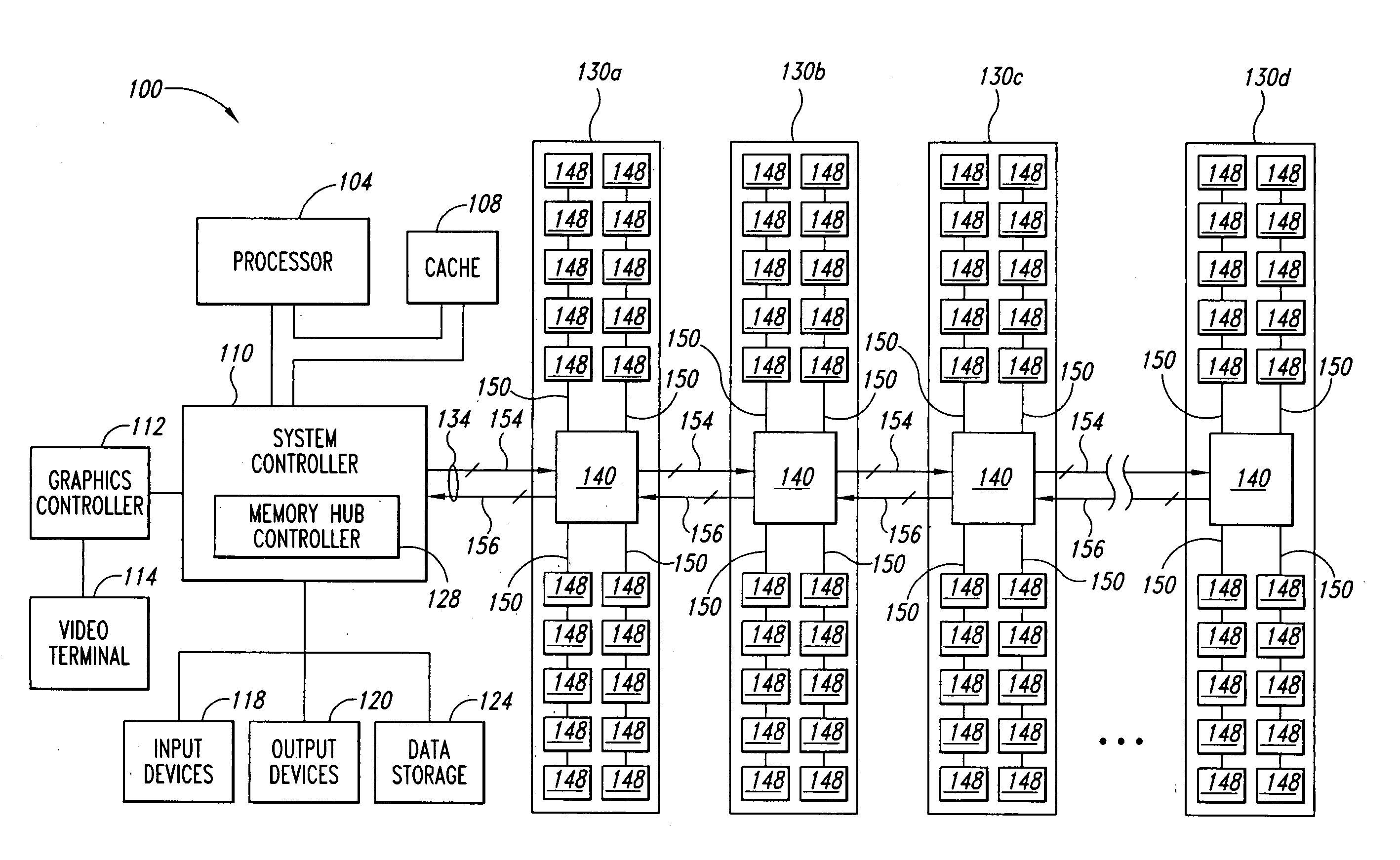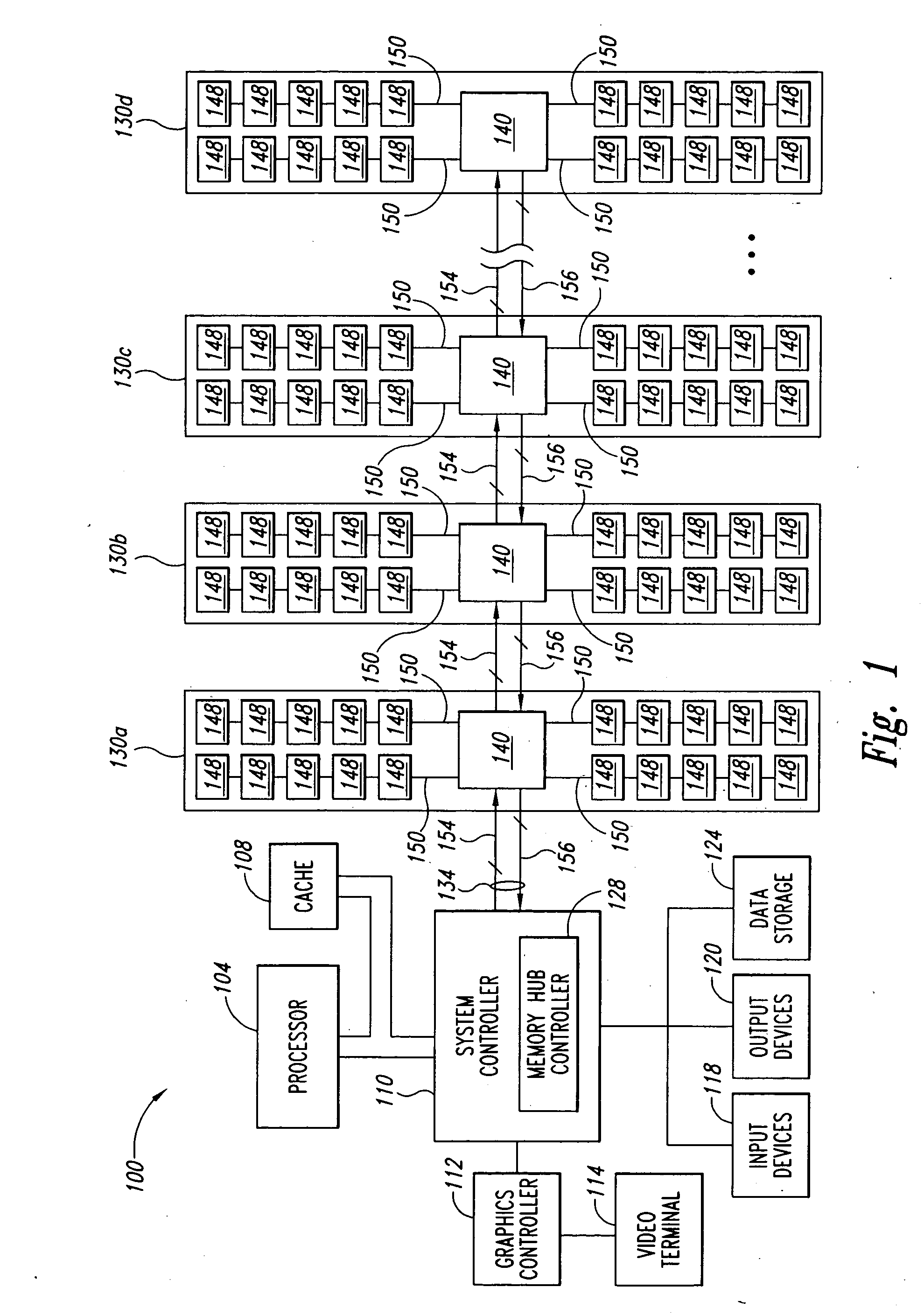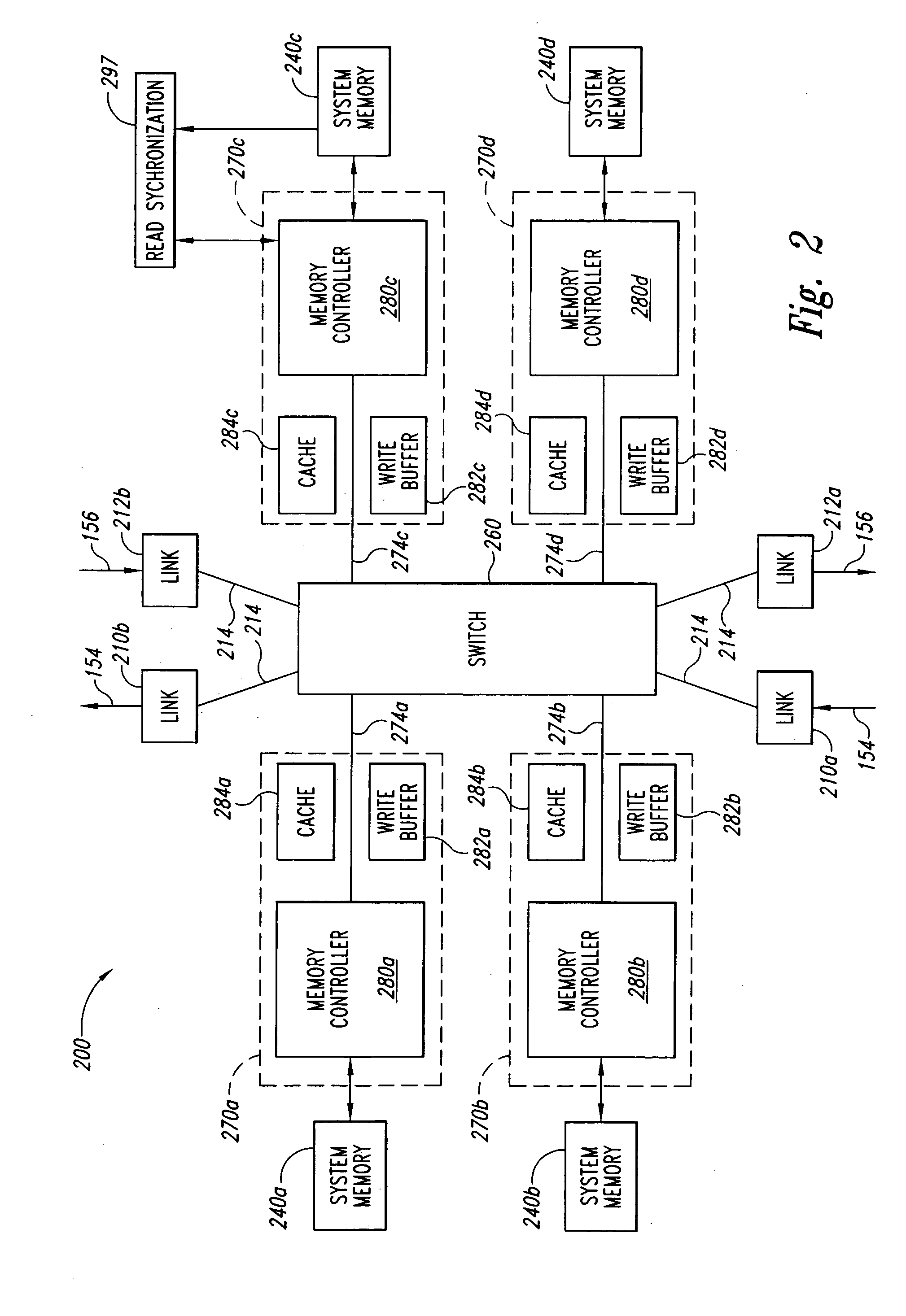System and method for an asynchronous data buffer having buffer write and read pointers
a buffer and write pointer technology, applied in the memory system field, can solve the problems of reducing the hardware limitation of the memory device itself, affecting the performance of the memory device, and not related to the bandwidth limitation, so as to reduce the hardware limitation, the memory is typically more expensive, power and/or siz
- Summary
- Abstract
- Description
- Claims
- Application Information
AI Technical Summary
Problems solved by technology
Method used
Image
Examples
Embodiment Construction
[0021] Embodiments of the present invention are directed to a read data synchronization circuit for coupling read data across two clock domains and providing information on the timing margin between when read data is made available and when the data can be retrieved. Certain details are set forth below to provide a sufficient understanding of various embodiments of the invention. However, it will be clear to one skilled in the art that the invention may be practiced without these particular details. In other instances, well-known circuits, control signals, and timing protocols have not been shown in detail in order to avoid unnecessarily obscuring the invention.
[0022]FIG. 2 illustrates a memory hub 200 in which an embodiment of the present invention is implemented. The memory hub 200 can be substituted for the memory hub 140 of FIG. 1. The memory hub 200 is shown in FIG. 2 as being coupled to system memory 240a-d. The system memory 240a-d is representative of different types of mem...
PUM
 Login to View More
Login to View More Abstract
Description
Claims
Application Information
 Login to View More
Login to View More - R&D
- Intellectual Property
- Life Sciences
- Materials
- Tech Scout
- Unparalleled Data Quality
- Higher Quality Content
- 60% Fewer Hallucinations
Browse by: Latest US Patents, China's latest patents, Technical Efficacy Thesaurus, Application Domain, Technology Topic, Popular Technical Reports.
© 2025 PatSnap. All rights reserved.Legal|Privacy policy|Modern Slavery Act Transparency Statement|Sitemap|About US| Contact US: help@patsnap.com



